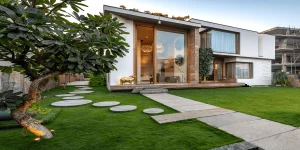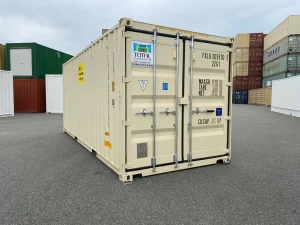Incorporating Sustainable Materials in Your Home Design

Sustainable materials have a lower environmental impact and can be used for various home and office projects, while adding a unique aesthetic touch to your space.
Choose paints and finishes with low VOC content in order to reduce indoor air pollution, such as organic cotton or wool textiles and bamboo furniture.
Consider opting for FSC-certified or reclaimed wood and avoid purchasing products made from endangered species with damaging extraction processes.
Reclaimed or Repurposed Materials
Reusing existing materials rather than producing new ones reduces waste while conserving natural resources, saving both time and resources in the process.
Reclaimed wood adds character and is cost-effective; perfect for shelving, furniture, walls and floors alike. Repurposed bricks make attractive patios and walkways; pressure-treated railroad ties help edge planted areas or terrace steps on sloped land – incorporating these secondhand solutions can significantly lower environmental impacts when building homes.
Energy-Star Rated Appliances
Energy efficient appliances use less energy to perform their function, cutting recurring costs for consumers while producing less waste in terms of air pollution and greenhouse gasses. When purchasing new appliances, look out for appliances displaying the ENERGY STAR label; it shows how it compares with similar models in its class.
In 1992, the Environmental Protection Agency launched this voluntary program to recognize products with superior energy efficiency that both save money and help preserve the planet for future generations. Since its inception, more than 450 billion dollars has been saved through energy efficient home appliances; their reduced carbon footprint preserving our planet for future generations.
Sustainable Furniture
Sustainable furniture is made with renewable, biodegradable, nontoxic materials with minimal environmental impact and uses renewable energy sources for production and delivery of the pieces.
Sustainable materials may include reclaimed or old wood, which provides your home with an antique touch while helping save trees from being cut down. Reclaimed or old wood often comes from torn-down buildings and homes and has its own story; making each piece truly one-of-a-kind.
Ask the furniture company you are dealing with about their sustainability initiatives and initiatives. Their website may offer details regarding which factories they work with and their methods for assuring fair production standards.
Low-VOC or VOC-Free Paints and Finishes
Choose eco-friendly paints, primers and varnishes instead of oil-based alternatives for maximum environmental benefit. Eco-friendly coatings typically contain less volatile organic compounds (VOCs). VOCs release harmful gases into the atmosphere that are detrimental to humans as well as the planet.
Eco-friendly paints tend to use natural pigments and clay-based oils instead of petroleum products for surface coverage, with lower coverage per application than their conventional counterparts. Furthermore, eco-friendly options may cost more than their counterparts.
Green Planet Paints provides zero-VOC interior and exterior wall paints in flat and eggshell finishes, made with vegetable resins and eco-mineral components. Their Ecosphere Breathable paint actively absorbs CO2 from the atmosphere for clean air quality.
Recycled Glass
Glass is an eco-friendly material to incorporate in home design, as it can be recycled easily at local recycling plants or curbside/public recycling centers.
Glass manufacturers use an assortment of raw materials such as sand, soda ash, and limestone in order to produce new glass bottles and jars. Substituting post-consumer recycled cullet for some of these raw materials reduces energy usage as well as emissions significantly.
Accents like recycled glass wall art, vases and lighting fixtures create an eye-catching display to impress your guests. Furthermore, every ton of recycled glass used in manufacturing saves over one ton of natural resources from being extracted from Earth.
Bamboo
Bamboo is an eco-friendly material with multiple applications in construction and design. As it grows quickly and effortlessly, bamboo makes for an eco-friendly building material with natural aesthetic that blends easily into many design styles.
Bamboo can be used in numerous ways, from decorative accents and flooring, to lighting fixtures, frames and lighting. There are even bamboo frames available that add an eye-catching accent to any wall – these frames are constructed using pressed bamboo joined with recycled nylon connectors – making them more sustainable design-oriented than most designs on the market.




